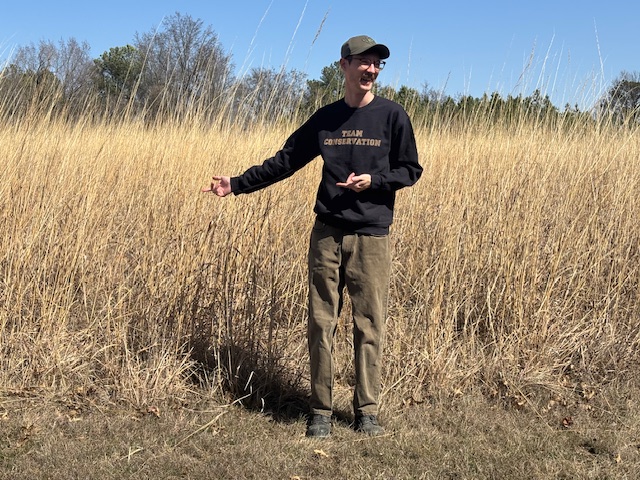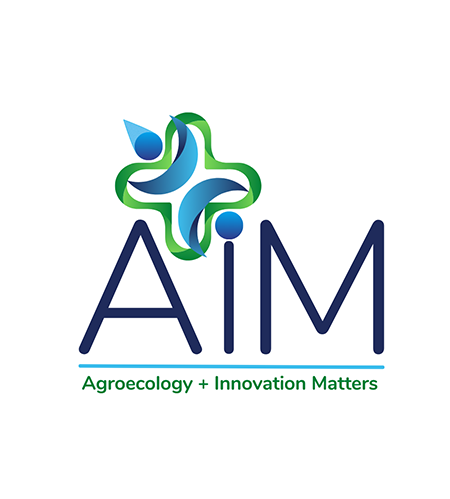Although the bison have been gone for quite some time, many of the O’Fallon area residents still fondly refer to the Brown Family’s property as The Buffalo Farm. According to Stephen Brown, the family’s involvement with the farm dates to around 1860, and his grandfather was born on the farm around 1890. During the 1950’s, there was a drought out west that caused buffalo to start starving. Stephen explained that an appeal went out for people to house some, and his grandfather agreed to take four. He said, “And the story was that they had all been neutered or they were all females… I can’t remember what it was, but that was not true, and the herd expanded to 16 pretty quickly. And he maintained them for many years until he felt he was too old to manage it in his seventies, and then he sold them off. But the old timers around here still know the farm as the buffalo farm, and that’s what we call our LLC—Buffalo Farm, LLC. At one time, it was like an O’Fallon landmark. And if you came up into O’Fallon via Highway 50, there was a billboard that said O-Fallon—Home of the Buffalo Farm.”
What started out as an 80-acre farm grew to 380-acres as his grandfather made money in the car business and purchased more plots over time. Located just north of O’Fallon, the farm has 64.4 acres of CRP land, which has been in the program since 2003. While his primary focus is to bring more wildlife onto the farm, Stephen has implemented several NRCS practices, including 18.7 acres of hardwood tree planting, 4.5 acres of pollinator habitat, 19.6 acres of upland wildlife habitat management, 8.4 acres of forest stand improvement, 13.2 acres of conservation cover (native prairie). They also complete prescribed burning and tree thinning every four years for mid-contract management. The plant species growing on the property include little and big bluestem sideoats grama, wild rye, four species of coneflower, partridge pea, black-eyed susan, prairie dropseed, troublesome sedge, several asters, wild bergamot, prairie blazing star, compassplant, goldenrod, butterfly and common milkweed, ashy sunflower, foxglove beardtongue, golden zizia, rattlesnake master, bluejacket spiderwort, and white and blue wild indigo. Along with putting some of their land in the CRP program, the Brown Family farm was the first property to be put into a conservation
easement by Heartlands Conservancy in 2001. With suburban development quickly growing around their farm, this was a way for the family to protect their land.
They also work with a local farmer who grows corn, soybeans, and wheat on part of their land. Stephen said, “He’s a super nice guy and a very good farmer. And he’s very helpful to us when we need things done. Like last year when we had an invasion of lespedeza, in one of the prairie grass areas, and he just came and mowed it all down to give us a f resh start in the spring and didn’t charge us for it.” According to Stephen, this farm income allows them to continue to fund their ongoing conservation efforts.

Monroe County Conservation Planner Charlie Cole began working with Stephen just a few months after he was hired in March 2023. Since this was the first wildlife habitat contract Charlie had worked on, he received quite a bit of assistance f rom NGRREC Land Conservation Specialist Annette Marshall. Charlie said, “It took a lot of back and forth before we got something really concrete… So, it was a huge learning process on our end for the contract side, but Steve was there the whole time anytime we had questions for him or just needed some further input on what the end goals and everything were for the property and the direction he wanted to head with it. It ended up being a really great project to work on, and it is still… I mean, I was just out there with my daughter and the scouts, so it’s like the gift that keeps on giving with the work that Steve is doing out there. I still get to keep visiting and sharing the story about it. Charlie recently took a group of scouts to the property as an educational opportunity to assist in meeting the requirements to receive their Fish and Wildlife Management merit badges.
According to Charlie, Stephen’s contract is unique because it includes many different practices. He said, “I liked that there were multiple practices that all had to be there to work together for the overall goal, which doesn’t always happen with agricultural practices. A lot of time, we just do a single agronomic practice to address one issue, whereas this was a goal we were trying to meet by using multiple practices, and the more that Stephen and his crew were willing to put into place only benefitted that overall goal of getting more wildlife and getting more species and diversity back into that area.”
One of the biggest hurdles they have faced is battling all the invasive species on the property. It was one of the worst cases that Charlie has ever seen of Bradford pear completely taking over a hardwood planted area, where Stephen and his team had planted oak trees. Stephen said, “There was this one area where you could not see an oak tree. It looked like we would have to bulldoze the whole thing and start over again. But once we got in and cut them down, and then the oak trees…once they got some sunlight, started growing and came back very strong. So, that was immensely gratifying to me.” Charlie added, “And now because they are gone, it is bare in between. It was so thick there was no vegetation underneath any of it. So now, we’re going back in and getting some native seed in there, getting some grass, and getting some good cover to try to get some of those upland birds back.”
Stephen explained that he’s already seeing the difference these practices are making with wildlife on the property. He said, “I never saw a deer the whole time I was growing up on the farm, which we are talking 1950 until I went to college. So, never saw a deer, never saw a turkey, never saw a great blue heron, all the red-tailed hawks… These things now I see all the time… we did not see in the 1950s or 1960s. But now we have quite a herd of deer. After one of those big snowfalls, where you could see the deer tracks… I could not believe the number of deer tracks out there in the fields… I think we have a flock of something like 30 turkeys.” He mentioned that he frequently sees lots of other bird species, like indigo buntings, now as well.
Stephen and Charlie are both eager to continue their conservation efforts on the Brown Family farm. Charlie said, “We are still ongoing. Steve has another CRP that’s in another wooded area that had a hardwood tree planting in put 20 years ago… that’s up for re-enroll, I believe this fall. So, it’s not the end of the road by any means. There are multiple tracts out there. We’ve talked about other government programs that he may qualify for in other parts of the property for forest management.” He added, “I’ve barely seen the property. I’ve only seen what we’ve worked on so far. I know that it’s a lot bigger than I’ve explored yet, and so we’ll keep working on it.”
Stephen hopes that future generations will continue these conservation efforts as well. He said, “We’re not trying to make money off the farm, but we’re trying to be self-supporting, and ultimately, I would like the whole system to be sustaining. I’m also anxious to get the younger generation involved as much as possible for obvious reasons. My son wants to put a little house, like a summer house, on the property right on the spot where my grandfather ’s house originally stood.” While bison are no longer housed in the barn or grazing the pasture, many other wildlife are thriving and happy to have a sanctuary on the Buffalo Farm.

